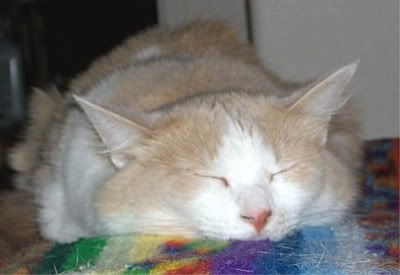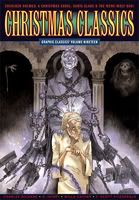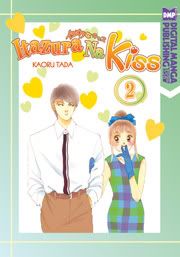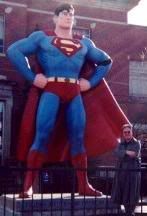| Pop Culture Gadabout | ||
|
Saturday, December 11, 2010 ( 12/11/2010 05:40:00 PM ) Bill S. WEEKEND PET PIC: Taken from October, a snoozin' Boo Cat pic:  THE USUAL NOTE: For more cool pics of companion animals, please check out Modulator's "Friday Ark." # | Friday, December 10, 2010 ( 12/10/2010 10:06:00 PM ) Bill S.  “THINK OF THE FRIO KID PLAYING SANTY!” Tom Pomplun’s Graphic Classics series goes seasonal with its 19th volume, Christmas Classics (Eureka Productions), and as in earlier volumes in this well-produced series of classic lit adaptations, the new color comics anthology contains a strong blend of familiar and lesser known works by American and British writers. “THINK OF THE FRIO KID PLAYING SANTY!” Tom Pomplun’s Graphic Classics series goes seasonal with its 19th volume, Christmas Classics (Eureka Productions), and as in earlier volumes in this well-produced series of classic lit adaptations, the new color comics anthology contains a strong blend of familiar and lesser known works by American and British writers.After a one-page intro reprinting a Letter from St. Nicholas written by Mark Twain (more charming than satiric), the book opens with its two most familiar Christmas works: an adaptation of Dickens’ “A Christmas Carol” and Clement Moore’s “A Visit from St. Nicholas.” The first, adapted by Alex Burrows and Micah Farritor, proves serviceable; though the writer and artist don’t really add much to this holiday chestnut save for the image of Marley’s ghost’s jaw dropping off of his face in mid-warning. Still, the version remains true to Dickens’ vision and thankfully doesn’t stint on some of the grimmer images so essential to the story. Florence Cestac’s big-nosed illos on the equally familiar Moore poem are wholeheartedly cartoony, though, in this case the poem’s familiarity works against the graphics in more than one panel. When our narrator is roused from bed by the rooftop clatter, for instance, the sharp-eyed reader can’t help wondering, “Isn’t this guy supposed to be wearing a nightcap? And where’s mama?” It’s okay to make the art cartoonlike, just stay true to the limited text, okay? From there, though, the selections in Classics grow increasingly more surprising. Rich Rainey and Hunter Emerson’s “Adventure of the Blue Carbuncle” takes a lightweight Sherlock Holmes adventure and reminds us that even classic literary series characters weren’t immune to the demands of a holiday adventure. British artist Emerson, who can sometimes get pretty free-wheeling in his artwork, plays it relatively straight with this outing, though doubtless some Baker Street Irregulars will take issue with the exaggerated features on his great detective. O. Henry’s Christmas romance, “A Chaparral Christmas Gift,” is handled much more conservatively by artist Cynthia Martin, which works for this none-too-surprising western yarn. (The writer’s better known offering, “The Gift of the Magi,” has already been adapted in a Graphic Classics O. Henry collection.) Editor Pomplun, who has handed himself the task of adapting the more obscure works, handles this and the next three tales, the most visually outlandish being an adaptation of Willa Cather’s “Strategy of the Werewolf Dog,” the story of a Grinch-y attempt to destroy Christmas that amazingly doesn’t end with the villain’s reformation. Dutch former undergrounder Evart Geradts renders this tale in a heavily stylised manner, like a children’s book on acid, which leavens Cather’s dark fantasy somewhat. Definitely an odd little tale. F. Scott Fitzgerald’s jazz age short story, “A Luckless Santa Claus,” comes across more than a little contrived in its comedy. The story of a well-to-do scion who is challenged by his girlfriend to give away $25.00 in one night to less fortunate New Yorkers, the story’s central premise may strike many readers as unbelievable in these fiscally strapped times (each time our hero attempts to surreptitiously give some money away, the recipients return it), though Simon Gane’s art captures the snow-strewn period city setting nicely. With Fitz-James O’Brien’s holiday horror tale, “The Wondersmith,” Pomplun and artist Rick Geary end the book on a suitably imaginative note. The story of a wicked sorcerous trio who plot to send killer dolls out to slaughter Christian children, the story is rendered with wit and conviction by Geary. The artist, best known for his own series of graphic novels examining famous 19th and 20th century murders, is a master of period melodrama, and he’s definitely in his element here. At one point, when the title central miscreant gloats about his nasty plans, you find yourself wishing that his moustache were longer so he could start twirling it. The dastard’s evil War on Christmas is defeated, of course -- by a noble hunchback bookseller, a waifish organ grinder and her pet monkey -- because you can’t make a holiday story like this too grim, can you? Often, when it comes to Yuletime entertainments, the creators count too much on the good will engendered by the season to cover half-assed careless work. That is not the case with this collection here, though, which represents Pomplun and many of his usual collaborators working to their storytelling strengths. It’s one of the solidest Graphic Classics sets to date. (First published on Blogcritics.) Labels: classics illustrated # |Thursday, December 09, 2010 ( 12/09/2010 06:01:00 AM ) Bill S. MID-WEEK MUSIC VIDEO: From New York Popper Jed Davis, here's a track from his recent The Cutting Room Floor: # | Sunday, December 05, 2010 ( 12/05/2010 10:56:00 AM ) Bill S.  ”IT’S LIKE I’M WATCHING A VIDEO OF MYSELF FROM ONE YEAR AGO.” The stakes grow more broadly comic in the second volume of the shojo romcom Itazura na Kiss (DMP). Our pratfall prone heroine Kotoko and the arrogantly talented object of her desire Naoki Irie have both entered college together -- the latter enrolling in the same school as Kotoko even though it’s clear he could attend a more prestigious institution -- but while the setting has changed, the characters remain the same. Our girl continues to struggle academically and with getting a modicum of respectful attention from Naoki, who continues to infuriatingly and effortlessly glide through both class work and athletics. ”IT’S LIKE I’M WATCHING A VIDEO OF MYSELF FROM ONE YEAR AGO.” The stakes grow more broadly comic in the second volume of the shojo romcom Itazura na Kiss (DMP). Our pratfall prone heroine Kotoko and the arrogantly talented object of her desire Naoki Irie have both entered college together -- the latter enrolling in the same school as Kotoko even though it’s clear he could attend a more prestigious institution -- but while the setting has changed, the characters remain the same. Our girl continues to struggle academically and with getting a modicum of respectful attention from Naoki, who continues to infuriatingly and effortlessly glide through both class work and athletics.“It’s exactly like a continuation of high school,” Kotoko thinks at one point, only with the volume notched a little higher. Kin-Chan, the former classmate with a major crush on our heroine, shows up working in the college cafeteria, ready to loudly and embarrassingly proclaim his still-strong love for Kotoko, while a new rival, a brainy hottie named Yuko, quickly forces Kotoko to find new ways to remain in Naoki’s orbit. Her big strategy, joining the tennis club where both Naoki and Yuko excel, proves particularly battering. As a further complication, Kotoko and her father, who have been living with Naoki’s family since an earthquake trashed their house, are about to move back into their rebuilt home -- a change that is especially distressing to Mother Irie, who has been zealously and vicariously following the flickering relationship between her son and the girl she would like to see become her daughter-in-law. (When it looks as if the two are off again, she plunges into a deep depression.) Also paying attention to our leads’ still nascent relationship is Sudo, a member of the tennis club with a moustache Bradley Whitford’s Dan Stark would envy and an unrequited attraction for Yuko. Writer/artist Kaoru Tada (who regularly credits her assistants at the end of various chapters throughout the book) treats her comic material with a sure, light hand. Our central couple may provide a familiar shojo dichotomy (sweet clueless girl, arrogant super-boy), but Tada makes them individual enough to surprise us. Kotoko keeps having moments of insight that we at first don’t expect her to have, while Naoki periodically shows glimpses of something more than Golden Boy detachment. As in the first volume, Naoki spends time coaching our girl -- this time in tennis, not academics -- while we wait for Kotoko to have her own special teaching moment with him. Probably won’t come for a few more volumes, though. There’s a kiss in this entry, incidentally, but the meaning of this moment is kept ambiguous. That doesn’t keep Mama Irie and our duo’s overly interested freshman classmates from reading a lot into it, of course. As Tada wittily demonstrates, Life is High School even when it isn’t. (First published in Blogcritics.) Labels: sixty-minute manga # | |
|
|

